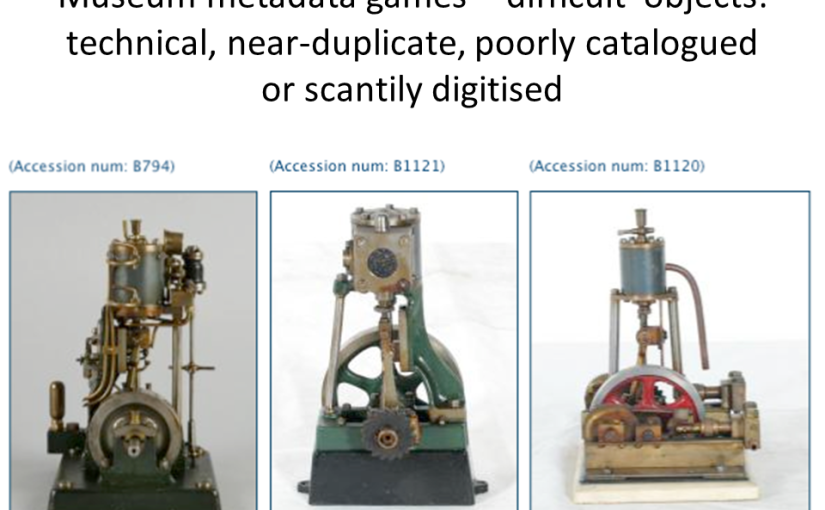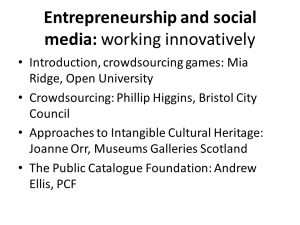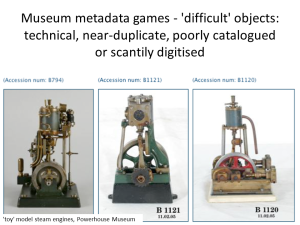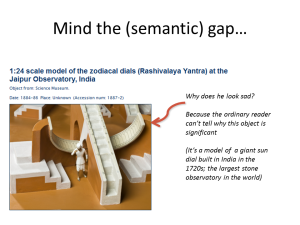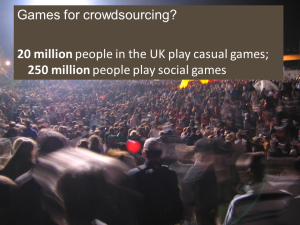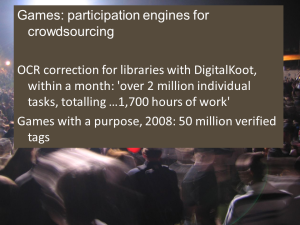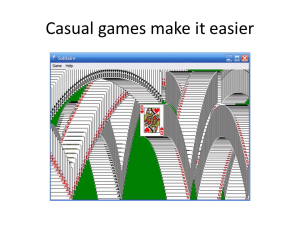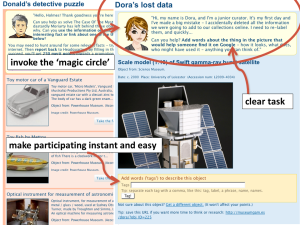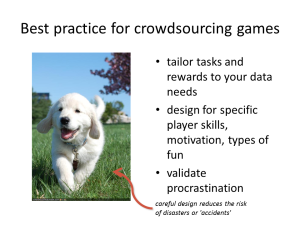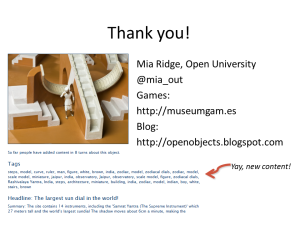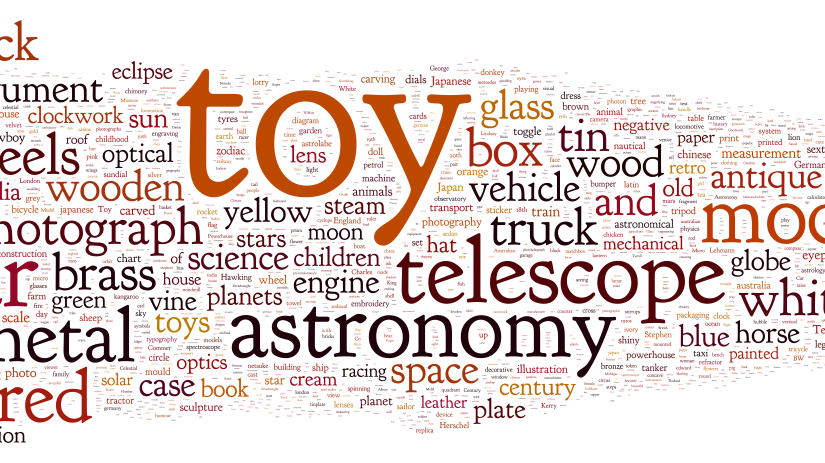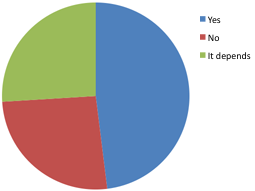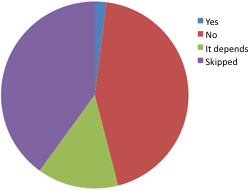I've been very quiet lately – exams for my MSc and work on the digital infrastructure for two new galleries (and a contemporary science news website) opening next week at the Science Museum have kept me busy – but I wanted to take a moment to post about my dissertation project. (Which reminds me, I should write up the architecture I designed to extend our core Sitecore CMS with WordPress to support social media-style interactions with Science Museum-authored content.)
Anyway. This project is for my dissertation for City University's Human-Centred Systems MSc. I'm happy to share the whole outline, but it's a bit academic in format for a blog post so I've just posted an excerpt here. I'd love to hear your comments, particularly if you know of or have been involved in creating, crowdsourced museum projects or games for social good.
'Game mechanics for social good: a case study on interaction models for crowdsourcing museum collections enhancement' is the current title – it's a bit of a mouthful but hopefully the project will do what it says on the tin.
Project description
The primary focus of this project is the design and evaluation of interactions applied to the context of an online museum collection in order to encourage members of the public to undertake specific tasks that will help improve the website.
The project will include a design and build component to create game-like interfaces for testing and evaluation, but the main research output is the analysis of museum crowdsourced projects and 'games for social good' to develop potential models for game-like interactions suitable for museum collections, and the subsequent evaluation of the proposed interaction models.
Aims and Objectives
This project aims to answer this question: can game-like interactions be designed to motivate people to undertake tasks on museum websites that will improve the overall quality of the website for other visitors?
More specifically, which elements of game mechanics are effective when applied to interfaces to crowdsource museum collections enhancement?
Objectives
- Design game-like interaction models applicable to cultural heritage content and audiences through research, analysis and creativity workshops
- Build an application and interfaces to create and store user-created content linked to collections content
- Evaluate the effectiveness of game-like interaction models for eliciting useful content
Theory
Recent projects such as Armchair Revolutionary[1] and earlier projects such as Carnegie Mellon University's 'Games with a purpose'[2] and InterroBang?![3] are indicative of the trend for 'games for social good'. Crowdsourced projects such as the Guardian newspapers examination of MPs expense claims[4], the V&A Museum's image cropping[5], Brooklyn Museum's tagging game[6], the National Library of Australia's collaborative OCR corrections[7]; Chen's (2006) study of the application of Csikszentmihalyi's theory of 'flow' to game design; and Dr Jane McGonigal's ideas about multiplayer games as 'happiness engines'[8] all suggest that 'playful interactions' and crowd participation could be applied to help create specific content improvements on museum sites. Game mechanisms may help make tasks that would not traditionally considered fun or relaxing into a compelling experience.
Within the terms of this project, the output of a game-like interaction must produce an effect outside the interaction itself – that is, the result of a user's interactions with the site should produce beneficial effects for other site visitors who are not involved in the original interactions. To achieve this, it must generate content to enhance the site for subsequent visitors. Methods to achieve this could include creating trails of related objects, entering tags to describe objects, writing alternative labels or researching objects – these will be defined during the research phase and creativity workshops.
Methods and tools
The project is divided into several stages, each with their own methodology and considerations.
Research
The preliminary research process involves a literature review, research into game mechanics and the theory of flow, and research into museum audiences online. It will also include a series of short semi-structured interviews with people involved in creating crowdsourced projects on museum sites or game-like interactions to encourage the completion of set tasks (e.g. games for social good) in order to learn from their reflections on the design process; and analysis of existing sites in both these areas against the theories of game design. This research will define the metrics of the evaluation phase.
Creativity workshop(s)
The results of this research phase sets the parameters for creativity workshops designed to come up with ideas and possible designs for the game-like interfaces to be built. Possible objectives for the creativity workshop include:
- designing methods for building different levels of challenge into the user experience in an environment that does not easily support different levels of challenge when museum-related skills remain at a constant level
- creating experiences that are intrinsically rewarding to enable 'flow' within the constraints of available content
Build and test
In turn, the creativity workshops will help determine the interfaces to be built and tested in the later part of the project. The build will be iterative, and is planned to involve as many build-test-review-build iterations as will fit in the allocated time, in order to test as many variant interaction models as possible and support optimisation of existing designs after evaluation. User recruitment in this phase may be a sample of convenience from the target age group.
The interfaces will be developed in HTML, CSS and JavaScript, and published on a WordPress platform. This allows a neat separation of functionality and interface design. Session data (date, interface version, tester ID) can be recorded alongside user data. WordPress's template and plug-in based architecture also supports clear versioning between different iterations of the design, allowing reconstruction of earlier versions of the interfaces for later comparison, and enabling possible split A/B trials.
Analysis and write-up
Analysis will include the results of user testing and user data recorded in the WordPress platform to evaluate the performance of various interface and interaction designs. If the platform attracts usage outside the user testing sessions it may also include log file or Google Analytics analysis of use of the interfaces.
[1] https://www.armrev.org
[2] http://www.gwap.com/
[3] http://www.playinterrobang.com/
[4] http://mps-expenses.guardian.co.uk/
[5] http://collections.vam.ac.uk/crowdsourcing/
[6] http://www.brooklynmuseum.org/opencollection/tag_game/start.php
[7] http://newspapers.nla.gov.au/ndp/del/home
[8] http://www.futureofmuseums.org/events/lecture/mcgonigal.cfm
